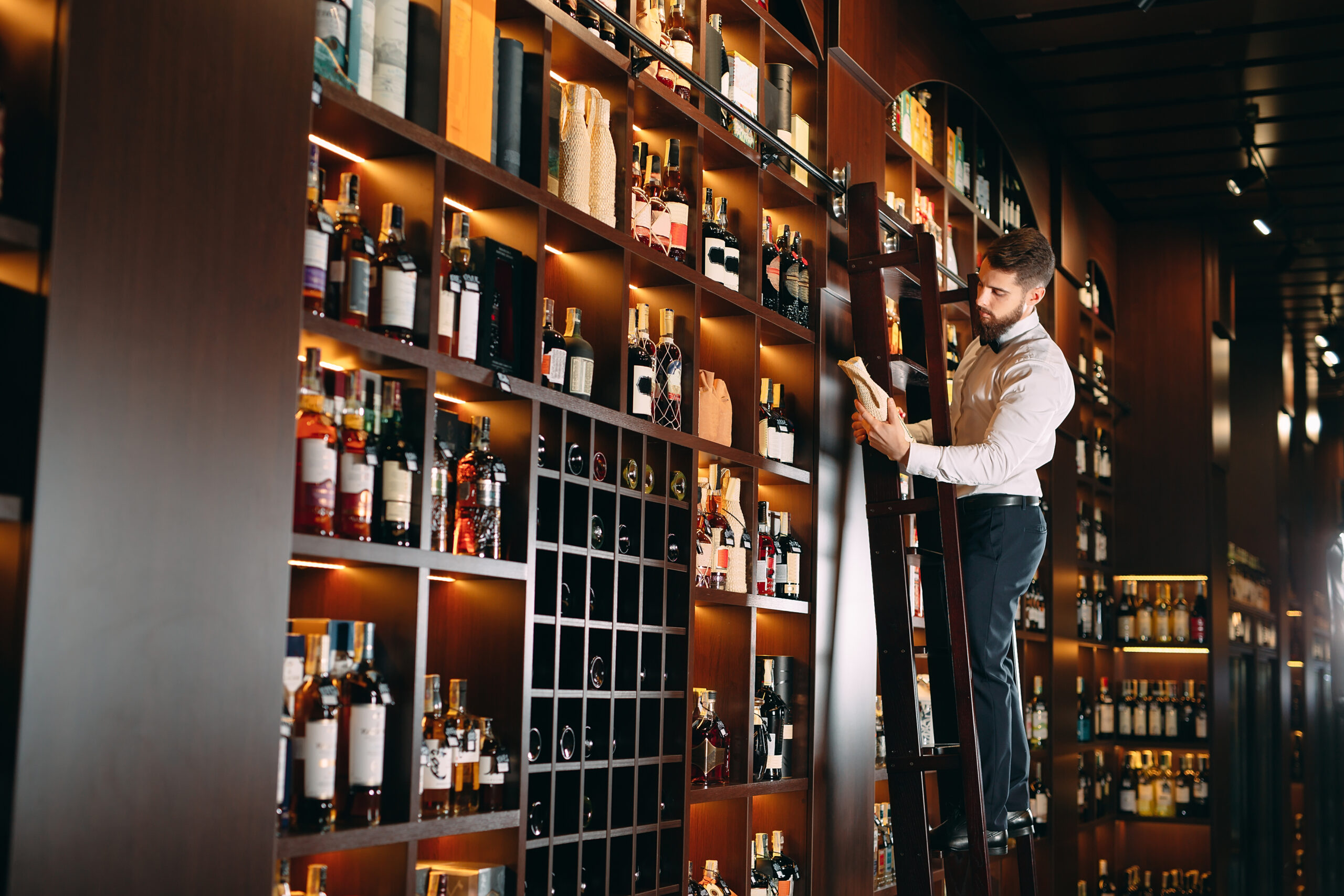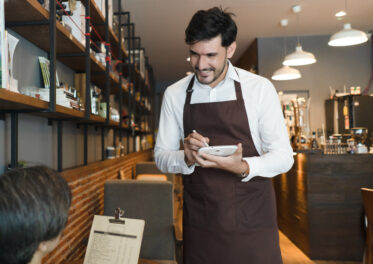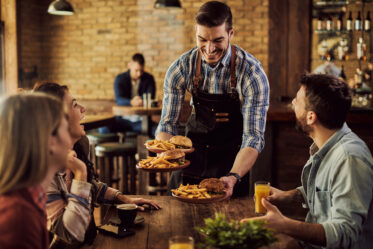
Considering the new realities of the 2022 market, the food and beverage industry could certainly benefit from consultative selling. The F&B industry reported record growth in 2021, but that wasn’t enough for the industry to completely escape recent challenges—including but not limited to staffing shortages and a host of supply chain issues.
In addition, the industry also incurred a pandemic-induced shift in consumer demand. Before the COVID-19 era, people were already beginning to transition into an era of conscientious consumption. People weren’t only demanding healthier food, but also for it to be produced by ethical, sustainable, and environmental-friendly sources. In addition, a burgeoning shift to vegetarian products took shape. The world was slowly becoming more health and environmentally conscious.
The pandemic caused a big shift in consumer demand
However, an entirely different set of health concerns (of the pandemic variety) put the ethical, sustainable, and environmental movement on hold. Fearing for the worst amid lockdowns, households began purchasing food in bulk for home storage. Online grocery shopping became an instant hit overnight.
At the same time, the loss of outdoor dining privileges didn’t diminish the demand for restaurant food. So, restaurants relied on delivery and takeout. However, unleashing the tidal wave of to-go meals meant a sudden additional surge in demand for packaging materials and condiments.
As the pandemic subsides, the consumer demand for sustainability is regaining momentum. However, Covid-19’s challenges continue to disrupt the food and beverages industry. Consumer demand and reality are at odds. What does this mean? Companies need to retool their strategies – again.
Consultative selling is an approach that can help companies better connect with their clients. By offering a collaborative ear to their clients, companies can overcome the industry’s limitations today.
1. Active listening improves customer experience
Active listening is one of those skills that everybody expects everybody else to have. In the food and beverage industry, active listening is a critical skill that can make all the difference in both dining experiences and the bottom line. In busy restaurants, the wait staff need to carefully absorb special instructions and dietary restrictions. An honest mistake can result in refunded plates or worse, physical harm to the guest.
Additionally, when salespeople take bulk orders for perishable items, they need to account for the client’s specific concerns on product origins, health concerns, or shelf-life. Nobody wants to be the one explaining to management why a client refused to accept a shipment. Consultative sales require salespeople to constantly practice active listening with clients.
How to really, really listen when food & bev customers talk
Of course, the biggest component of active listening is paying attention with open ears. However, there are other tips that can help improve listening skills. These include the following:
- Pause active thinking. This means intentionally ignoring your biases and previous experiences. Listen, fully absorb, then process.
- Stop thinking of an answer. The objective isn’t to fill a conversational lull; it’s to understand the client’s problems.
- Ask questions to clarify. The point of communication is to help get each other’s points across. Assuming you already know what the client means is a bad way to conduct business and a sure way to get an order wrong.
- Taking notes is a good idea (if you can keep up). In addition, this is not an excuse to not look at the speaker and provide visual cues that you’re actively listening. This includes looking at the speaker and nodding in agreement.
2. Better cross-selling and upselling strategies for sales reps in F&B
The proposition “Would you like fries with that?” remains a classic upselling tactic that doesn’t come across as a pushy sales tactic. On one hand, upselling and cross-selling bring in additional revenue streams for companies and help accelerate growth. On the other hand, customers are often suspicious of any out-of-the-blue suggestions to upgrade their warranty, join a membership club, or buy in bulk for more savings.
Consultative selling helps salespeople to skillfully manage the testy waters of cross-selling and upselling. While the aim is to generate additional revenue for the company, clients should also feel that any upgrades or expansions are something they wanted in the first place.
Use the POS to identify opportunities
Successful upselling requires the participation of an already-popular product. A restaurant’s point-of-sale (POS) system can help identify the top sellers on the menu. However, just because a product sells the most doesn’t mean it has the highest profit margins.
A great way to upsell is to offer add-ons to these already popular items. For example, a cheeseburger is a classic – a cheeseburger draped with extra cheese, bacon, and all the fixings? Now that’s an experience. If customers already like the burger, they’ll likely love the idea of taking it to the next level.
Identify receptive customers through consultative selling
For in-person dining, staff should learn when to offer a cross-sell or upsell opportunity. Typically, regular patrons are more likely to benefit from these opportunities, as they have already sampled most of the menu.
In contrast, new customers have yet to establish their trust in the establishment, and any sudden burger upgrade offers might not be received so warmly. However, staff should be ready to offer upsells when these clients ask for value add-ons to their meal orders.
Talk to customers to find out what they want
This is a method that successful food and beverage outlet owners often practice. Customers are always a great source of what works and what can work. Taking time to talk to guests during slow days can help gather insight into what people think about items. At the same time, it might be a good idea to ask what customers would like to see on the menu, or what item pairs well with an existing bestseller. Then, cross-reference this new information with actual sales data to see if the recommendations can actually work.
3. Improved takeout and delivery programs
There was a time when takeout or delivery was the last option for households who wanted to eat something else. Before 2020, if people were shelling out for a restaurant-quality meal, they would prefer to enjoy it at the restaurant. However, the pandemic lockdowns temporarily shut down the dining-in options for all restaurants for safety reasons.
Though the food and beverage industry is on the mend, the practice of ordering takeout will likely outlive the pandemic. For many households, ordering food online was an escape from everyday cooking. However, deliveries take time, while takeaways heavily rely on packaging materials. How can consultative selling improve the experience of eating takeout at home?
Set a delivery radius
The physical transport of food items is the most crucial part of the food delivery system. When people order food, they expect the items to arrive hot and appetizing. Receiving cold food can ruin a customer’s appetite – for both the meal and for repeat business. So, before offering delivery services, make sure that delivery times are factored into the process. It may be a good idea to decline delivery to far-reaching areas instead of risking disappointed customers.
Mind the packaging
With almost every restaurant offering delivery services, it’s important to pay closer attention to the packaging materials that handle your food. A good rule of thumb is to approximate your packaging’s appearance to match how you serve food in-house. Otherwise, patrons might find a distinction and just go with the better-looking option.
More importantly, choose packaging that can actually handle the food without the risk of spilling, leaking, or breaking during transport. Remember that for delivery and takeout, your food is only as good as the packaging you use to contain it.
In addition, try to incorporate your branding into the materials you use. Including a website name, phone number, and a menu insert can go a long way to generating new customers and repeat orders.
Building customer relationships in the food and beverage industry through consultative selling
The food and beverage sector is one of the most customer-centric industries out there. It’s also the most unforgiving, as even one bad customer experience can snowball into a serious problem with the potential to ruin a business. Plus it’s one of the most competitive, given the fact it’s centered around one of the most basic human needs: nourishment.
When done right, managing a food and beverage business can also be one of the most rewarding. Caring for people through the art of food is unmatched. This is why it’s important to stay connected with consumers and keep track of their evolving needs.
Look to Skynamo to help your company streamline its consultative selling methods – to exceed customer demands while also raising the bottom line. Its automated features mean less time spent reporting, and more time spent actually gaining insight from customers.
Take this opportunity to learn more about how Skynamo can help your field sales team. Let’s chat so we can establish exactly how we can be of service to you and yours!



